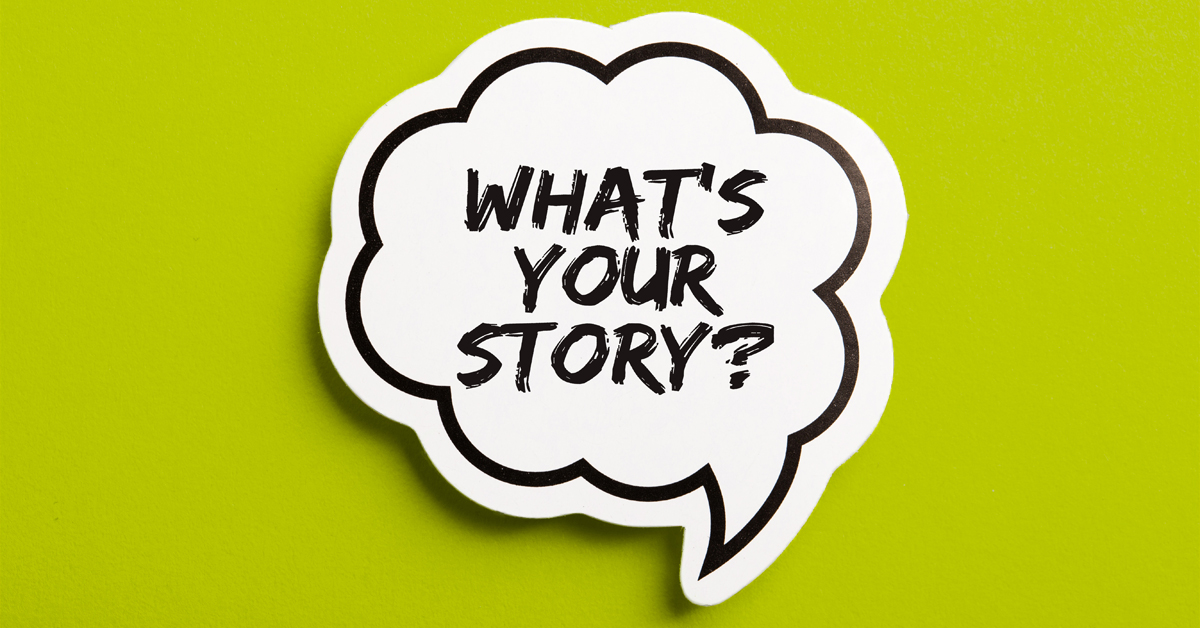At ColinKurtis, we believe every company needs a brand story. Why? First, we must define it—and honestly, that might be all you need to hear to start!
According to Forbes, a brand story tells the motivation for starting your business, why you get up and do what you do every day, why customers should care, and why they should trust you. The brand story builds connections and trust—two of the most important aspects of any business.
When you look at successful brands, what do you see? Maybe you see a unique post on LinkedIn that you think really showcases the brand well. Or perhaps it’s a catchy tagline or ad copy that you can’t stop thinking about. One thing’s for sure: you not only remember what you saw, you also remember the brand it advertised. That is the KEY!
A brand story will help you define your brand’s purpose, who you are and your “why,” making future marketing executions easier and more fun for your team. Most importantly, by putting these goals into an accessible asset shared across various departments in your company digitally or in print, it ultimately helps align your team and your vision across the board. Whether you’re a food ingredient company or food manufacturer, every business needs a solid brand story.
What to Consider Before Starting
You might be thinking:
- What’s the point if I already know who we are and what we do?
- We have brand guidelines, so isn’t it the same thing?
If you’re ever looking to hire new employees or work with an agency to support your marketing efforts, a brand story is an excellent way to introduce yourself and communicate your brand values. And while you most likely have an established website, logo, brand colors and images, those tend to be primarily external-facing marketing pieces that share a lot about your brand but not the sought-after narrative from inception to commercialization.
When it comes to marketing or working with an agency, the brand story creates accountability to stay focused on key brand elements, helping drive more consistent and more effective creative. This document can be referenced with every project to ensure the best possible creative and strategic executions that align with your brand.
Brand Story vs. Brand Guidelines
It’s also important to distinguish brand guidelines from a brand story. Brand guidelines, for example, can also help you flesh out essential brand messaging and personality since the guidelines aim to help you establish and solidify the look and feel of your brand. However, it gets into the nitty gritty of brand elements such as photography, primary and secondary fonts, basic messaging, icons, etc., touching less on the actual narrative you want to share. Its driving purpose is not to build trust like the brand story.
Questions To Ponder
To us, the brand story is a very intentional document—one that is a touchpoint and inspiration for any future projects. So we start with a few critical questions and expand from there:
- What promises do you make to your target audience?
- What motivates your team to get up and do what they do every day?
- What words do your customers use to describe you?
- What words do your employees use to describe their workplace?
- Who are you appealing to (desired customers), and why?
What Can a Brand Story Do For You?
A solid brand story can help your company in various ways. And while your products and services may be able to sell themselves, an integrated marketing approach can help you stay consistent with every aspect, from messaging to your brand personality.
Creating a brand story allows you to make it a little more personal since it will only be used internally. On the other hand, if you’re typically more serious in your external-facing products due to your industry, this is a chance to diversify and speak to your people authentically. Tip: When developing a brand story, think about how it will inspire and motivate your team!
Brand Messaging
Why should anyone care about your brand? In the brand story, you’ll justify the messaging you use to describe your products and services based on your target audience. For example, your goal may be to highlight your products as innovative and clinically proven by research. Therefore, you’ll use technical, clear and concise language to help your audience take your brand and products seriously.
Brand Persona
The brand persona encompasses who you are and the tone you use to speak with customers. For example, you may choose to go with any of the following:
- Friendly
- Warm
- Trustworthy
- Transparent
- Fun
- Creative & more
There’s virtually no limit to how many words describe your brand, but at the same time, you also don’t want to create polarizing identities. So when narrowing down your list, consider reaching out to your team for suggestions and thoughts. Everyone will have their own opinion, and you can end up with a comprehensive list embodying your whole brand.
Overall Consistency
There’s nothing more confusing than mixed messages, and you definitely want your customers to understand what you offer. From what you do to how your team delivers on their promises— selling your products and services—everything is encapsulated by a well-told brand story. This brand story will drive your narrative and, in the long run, help your audience remember who you are and give them a few reasons to care about you!
Developing a brand story can be challenging, especially if you have many team members and stakeholders providing their input. And there are many ways to create a brand story. That’s why ColinKurtis is here to help! Want help creating a compelling brand story? Check out our work for some inspiration. Or contact us now and let’s get started on telling your unique story.
Blog post from:
Debra Tucker
Vice President, Creative Director


Leave A Comment